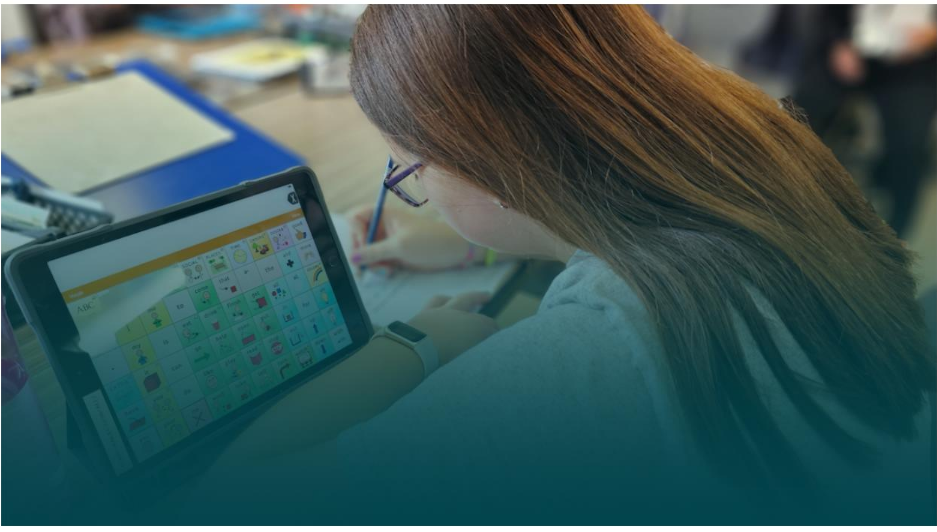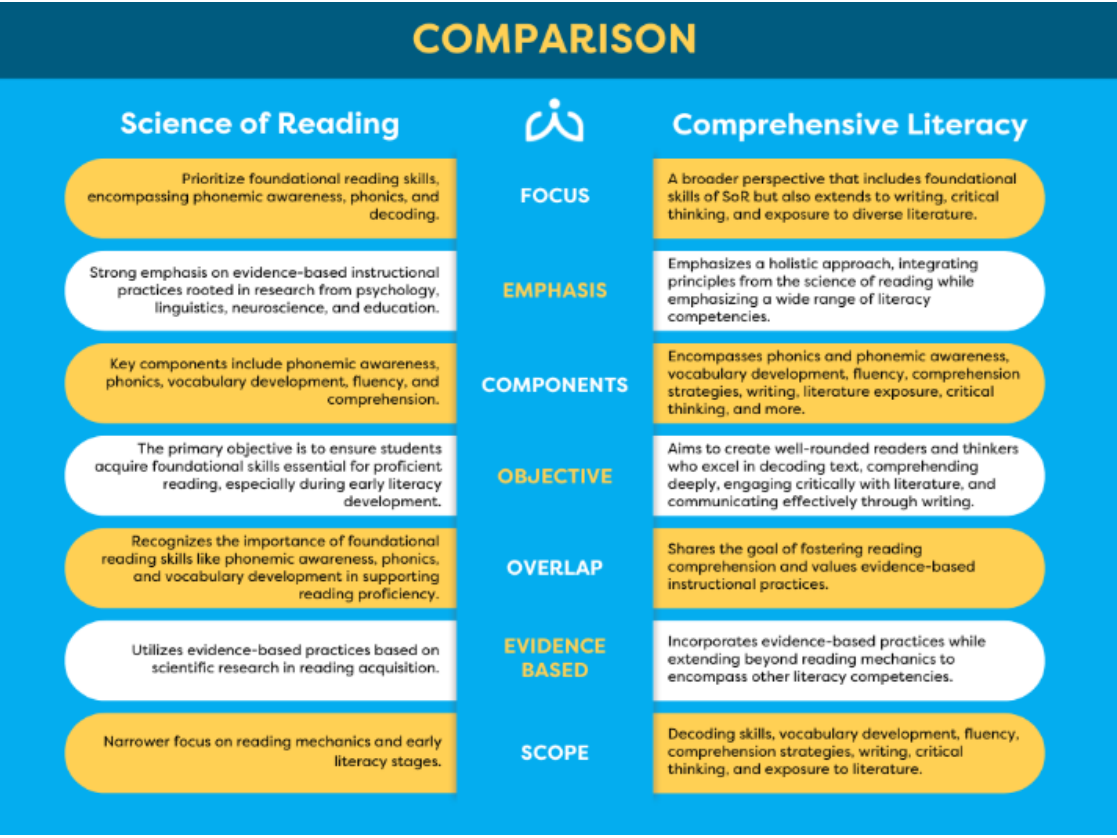Literacy for Students Who Use AAC: New Opportunities, New Outcomes
Learning to read is an important milestone in the lives of most students. Helping AAC users to tackle this skill is essential for their continued progress and future literacy. Maureen Donnelly and Trish Johnson share their experience and insights on this topic to help expand literacy for ALL.
(Learn more about supporting early learning in MaureenDonnelly's 2023 AAC in the Cloud session here.)
By Maureen Donnelly, M.Ed and Trish Johnson
In the world of education, reading instruction has been a source of conflict and debate for decades. Parents, teachers, school administrators, and even legislators bicker about who can learn to read, what they need, and how we can best provide it.
Literacy Instruction for AAC Users

Historically, students who use AAC have been omitted from the reading instruction debate for many reasons including but not limited to low expectations, myths about prerequisites, and the challenge of defining growth even in the smallest increments.
Dr. Karen Erickson and her team at the Center for Literacy and Disability Studies at UNC-Chapel Hill, have provided ample evidence that growth results when we provide all learners with evidence-based instruction. In fact, Dr. Erickson and her colleague, Dr. David Koppenhaver published a book in 2017 titled, Comprehensive Literacy for All, which has changed the academic expectations and outcomes for children who face learning barriers worldwide. It prescribes a series of simple, daily, but robust routines that benefit both emergent and transitional learners.
Despite the wide embrace and deployment that have resulted from the book, it poses an unanswered question: how does comprehensive literacy instruction overlap with the science of reading? This article endeavors to define both, answer the question and articulate how comprehensive literacy instruction ultimately dovetails with the science of reading, ensuring more growth and success for more children, including those who use AAC.
Understanding Comprehensive Literacy
Comprehensive Literacy is a holistic approach to teaching literacy that emphasizes the interconnectedness of reading, writing, listening, and speaking skills. It recognizes that literacy is a complex set of abilities that enable individuals to understand, communicate, and derive meaning from written and spoken language. Comprehensive literacy instruction focuses on nurturing these skills through diverse strategies and activities, often centered around key components such as phonics, fluency, vocabulary, comprehension, and writing.
Comprehensive literacy places a strong emphasis on integrating reading and writing, encouraging students not only to consume but also to produce text. It fosters critical thinking, creativity, and effective communication while instilling a love for language and literature.
Advocates argue that this approach provides a well-rounded foundation for lifelong literacy, arming students with the skills needed to navigate the complexities of the modern world.
Exploring The Science of Reading
The science of reading is a body of academic research that draws from cognitive psychology, education, neuroscience, and linguistics to articulate the processes that help all children learn to read. With the advent of new technologies that allow us to ‘see’ inside the brain, we recognize that while language and literacy are closely intertwined, there are some fundamental differences in what our brains need to develop both. Human beings, just by living in a social context will learn language, (even if expressing knowledge is a barrier), yet learning to read is a function of our evolution, and therefore, most people require explicit, systematic, and cumulative instruction to learn it. The science of reading can and does recommend evidence-based instructional practices, but it is up to us as parents, teachers, schools, and communities to apply this science in our classrooms.
Bridging the Gap: Areas of Convergence
While comprehensive literacy and the science of reading have distinct principles and emphases, they overlap and converge in the following key areas.

- Wide-Ranging Instruction
The science of reading recommends diverse instruction encompassing a wide range of learning opportunities and experiences including alphabet and phonics, text comprehension, vocabulary and oral language development, and fluency. These recommendations are specific to learners with some beginning independent skills, meaning that in most cases, they are school-aged children. On the other hand, comprehensive literacy instruction prescribes daily instructional routines that support these learning domains but support learners at the earliest stages of their literacy development and beyond.
- Emphasis on Phonics
The science of reading and comprehensive literacy instruction emphasizes phonics instruction within a wider sphere of diverse learning experiences, yet both support the idea that the most effective instruction is explicit, systematic, and sequential. Before emergent learners can benefit from this kind of instruction, they require the benefit of learning routines that target alphabet knowledge to identify, name, and connect letters with their sounds. In this way,
Comprehensive literacy instruction is inclusive, too, ensuring that all learners receive and benefit from instruction, even before they can demonstrate any knowledge or skills.
- Integration of Reading and Writing
When people refer to literacy instruction, they often fashion a boundary between reading and writing. This is a false dichotomy. While decoding is essentially converting print into meaning, encoding (or writing) translates spoken words into individual sounds via spelling. All learners need a mechanism by which to write, opportunities to write, and instruction to help them convert oral language into print. Both the science of reading and comprehensive literacy instruction acknowledge the interrelated nature of reading and writing. Whereas the science of reading tends to treat writing as an act of expression, comprehensive literacy Instruction emphasizes writing as a generative act of communication. This is particularly powerful to learners who use AAC, since ultimately, the ability to spell and write is a primary mechanism for communication. Regardless, the priority is the same. Reading experts tell us that students should be provided with a way to write, access to the entire alphabet, opportunities to write, and personalized instruction that leads to growth. In this way, The science of reading and comprehensive literacy instruction dovetail easily in this respect.
Shared Priorities: Science of Reading and Comprehensive Literacy Instruction
The teachers, parents, and schools need not decamp to one position or the other when it comes to supporting all learners on the path to independent, conventional literacy. Comprehensive literacy instruction (an instructional methodology) and the science of reading (a body of research) prioritize delivering diverse, evidence-based literacy instructional experiences, explicit systematic phonics instruction, and opportunities to integrate reading and writing to benefit both. Their shared goal (and ours!) has always been to ensure that educators can equip all their students, including those who use AAC, with the skills, knowledge, and disposition toward literacy that lead to full participation in a literate society.

Maureen Donnelly, M.Ed. is a Curriculum Development Manager at Building Wings. Who is an early childhood educator by training and has worked with students of diverse ages and abilities, from preschool through college. Throughout her 25-year career, Maureen has developed numerous products and written hundreds of books that support the literacy learning needs of beginners. You can follow her on LinkedIn

Trisha Johnson has been an advocate for learners for the last 25 years and now serves as the president of Building Wings. She believes that ALL Means ALL and that all students can learn. You can follow her on LinkedIn, X, and Instagram
